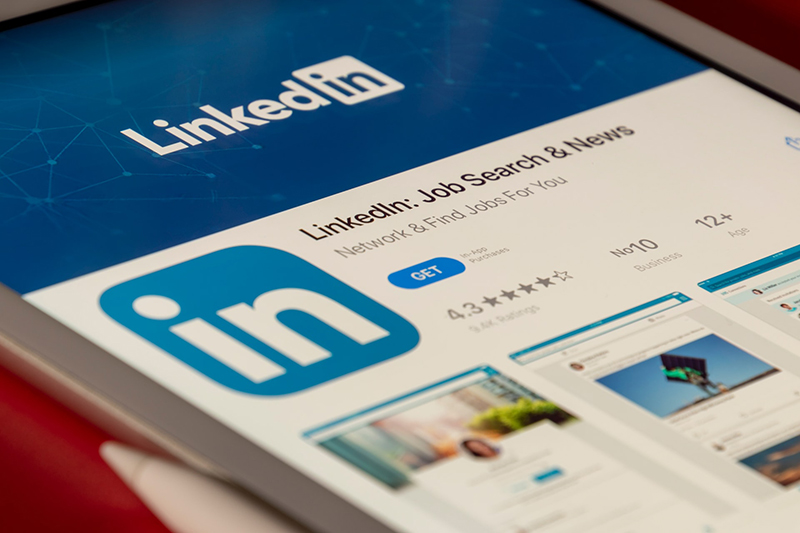LinkedIn is the social network where you can create a network of professional contacts and collaborations and also to find new job opportunities.
This makes it profoundly different from other social networks such as Facebook: the network to be built on LinkedIn must not be based on friendships, hobbies and personal interests, but must reflect the work context in which you operate and the network of knowledge and skills that you have built over the years. And obviously to create the basis for its future development.
This last point is fundamental: LinkedIn is not a virtual tool but a real, concrete and really useful, indeed fundamental, means to create and evolve your professional network.
An introductory note: on the LinkedIn network, people (those elsewhere called Friends ) are called ” Connections ” and can be three degrees; this number is always indicated with an icon next to the name of the link itself:
- 1st degree: people with whom you are directly connected by explicitly accepting the invitation of the other. They can be contacted directly for example by sending a message on LinkedIn.
- 2nd degree: people connected to their first degree connections. You can send these people an invitation (by clicking on Connect) or contact them through an InMail message.
- 3rd degree: people who are connected to the second degree connections.
The greater the first degree connections, the greater the second and third degree connections. The number of connections affects the ranking and therefore the visibility of those who are not yet a first-degree connection, i.e. a potential customer, a partner, a recuiter, etc.
Having at least 500 first degree connections is already a good start.
Here are 5 good tips to improve your network, starting with first degree connections.
First of all, present yourself well

It’s about work so you need to have a more institutional profile than on other social networks:
Present yourself with a professional photo.
A detailed curriculum vitae but at the same time not too long.
Indicate the geographical area: in this way, if relevant, the geographical aspect will also be included in the search for a recruiter looking for candidates or a client looking for a professional service nearby.
Enter all the info in your CV to make yourself “searchable”: school, companies, interests, etc.
Pay attention to the headline and URL
It is good that the headline, that is the two lines of presentation under your name, are clear and provide useful information.
Those who search for a professional may not have the time to dwell on all the details of the profile, so this very brief description can provide a clear idea of their skills or the services offered and can therefore make a difference in conveying traffic.
It is also good to customize the url of your Linkedin profile: like the url of the pages of a website, the one relating to the Linkedin profile must be clear, “clean” and concise, with your name (or optionally a keyword capable to identify you).
Changing this parameter is simple: “Edit your public profile” on the right and, on the page that opens, click on the pencil next to the URL of the public profile.
While it seems like an action that doesn’t carry a lot of weight, it is rightfully part of the LinkedIn tricks that allow you to grow your network.
Make yourself “visible” by publishing targeted content

The Linkedin network follows you if you are an expert in your specific sector. It is therefore clear that it will not be a selfie that will make your Linkedin profile more attractive!
Linkedin allows you to publish text (for example quotes from famous professionals), photos, videos, links from your blog or from others.
The rule is simple: be useful to your network. Your contacts decide to follow you because you are interesting, always updated, useful in reporting interesting topics (the so-called content curation), and therefore in summary to help them grow professionally.
To always have new ideas, you can use tools which helps you every day to discover useful content, attractive images for your social networks and publish them with a click on your LinkedIn page.
Don’t limit yourself to sharing third-party news, start posts and write articles. This last option allows you to write more text and thus be able to deepen topics that concern your sector, take advantage of it!
This is a good way to build an authoritative image in an industry or to make your profile more attractive to recruiters and clients. It is about personal branding.
Also optimize your profile summary
There are 2000 characters available: they must be used intelligently to talk about you, what you are capable of doing, what you can offer and above all why the reader should be interested in your profile rather than that of others.
It therefore makes no sense to summarize what is already written later in the CV, but rather what is not clear from the CV: strengths, interests, motivations, the key to use to understand what makes your CV different from others and at the same time what can arouse interest in the reader, intrigue him to read the details of the CV or even lead him to ask you for contact.
Also pay a little attention to SEO: enter the keywords that represent your business and that are also found in the headline of the profile.

